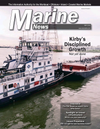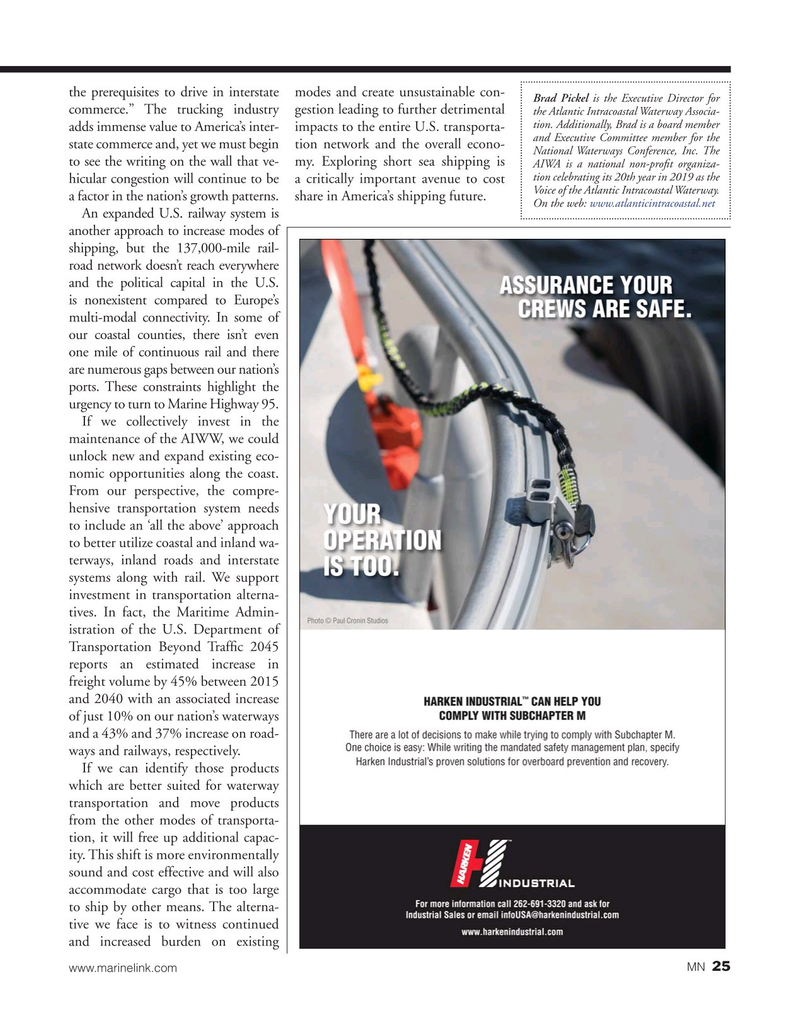
Page 25: of Marine News Magazine (May 2019)
Inland Waterways
Read this page in Pdf, Flash or Html5 edition of May 2019 Marine News Magazine
the prerequisites to drive in interstate modes and create unsustainable con-
Brad Pickel is the Executive Director for commerce.” The trucking industry gestion leading to further detrimental the Atlantic Intracoastal Waterway Associa- tion. Additionally, Brad is a board member adds immense value to America’s inter- impacts to the entire U.S. transporta- and Executive Committee member for the state commerce and, yet we must begin tion network and the overall econo-
National Waterways Conference, Inc. The to see the writing on the wall that ve- my. Exploring short sea shipping is
AIWA is a national non-pro? t organiza- tion celebrating its 20th year in 2019 as the hicular congestion will continue to be a critically important avenue to cost
Voice of the Atlantic Intracoastal Waterway. a factor in the nation’s growth patterns. share in America’s shipping future.
On the web: www.atlanticintracoastal.net
An expanded U.S. railway system is another approach to increase modes of shipping, but the 137,000-mile rail- road network doesn’t reach everywhere and the political capital in the U.S. is nonexistent compared to Europe’s multi-modal connectivity. In some of our coastal counties, there isn’t even one mile of continuous rail and there are numerous gaps between our nation’s ports. These constraints highlight the urgency to turn to Marine Highway 95.
If we collectively invest in the maintenance of the AIWW, we could unlock new and expand existing eco- nomic opportunities along the coast.
From our perspective, the compre- hensive transportation system needs to include an ‘all the above’ approach to better utilize coastal and inland wa- terways, inland roads and interstate systems along with rail. We support investment in transportation alterna- tives. In fact, the Maritime Admin- istration of the U.S. Department of
Transportation Beyond Traf? c 2045 reports an estimated increase in freight volume by 45% between 2015 and 2040 with an associated increase of just 10% on our nation’s waterways and a 43% and 37% increase on road- ways and railways, respectively.
If we can identify those products which are better suited for waterway transportation and move products from the other modes of transporta- tion, it will free up additional capac- ity. This shift is more environmentally sound and cost effective and will also accommodate cargo that is too large to ship by other means. The alterna- tive we face is to witness continued and increased burden on existing 25 www.marinelink.com MN

 24
24

 26
26
